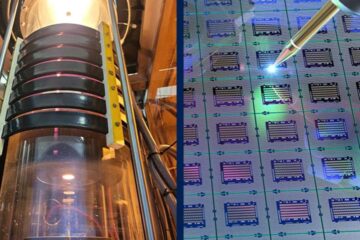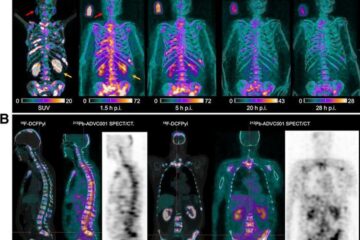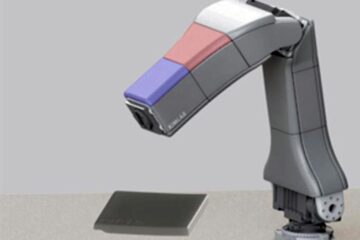Fire Can Be Stopped With The Help Of Nitrogen

Moscow scientists have come forward with a new methodology of fighting fire, as fire can be stopped if deprived of airflow. It is possible that soon fire-wardens will extinguish fire not with water or foam, but with liquid nitrogen.
A bright-red fire-engine has been demonstrated at the exhibition ‘High tech-2004’, held at Krasnaya Presnya exhibition complex in Moscow. The engine was so huge, that inside its body it could accommodate a tank the size of a well-fed elephant. The tank contained neither water or foam, but liquid nitrogen. The idea to extinguish fire with the help of liquid nitrogen was brought forward by the Moscow scientists from ‘Granat’ State Unitary Enterprise, Special Design Office named after V.K. Orlov.
Sadly enough, when a fire occurs in a library, theatre or even in an apartment building, the material damage caused by it might be comparable to that caused by the process of fire extinguishing. Valuable manuscripts, theatre decor and costumes, computers, even ordinary clothes and furniture – all these things get destroyed in a fire, being damaged not only by the fire itself, but also by water, foam and in the course of other traditional methods of fire extinguishing.
Therefore, a principally new approach is required when we deal with especially valuable cultural objects and buildings. This new approach has been proposed by the specialists from Moscow and implemented in a new fire-engine, called ‘a gas fire-extinguishing engine 4000’.
The idea is to stop a fire by blocking oxygen intake. In other words, replacing air by nitrogen, the researchers create an almost inert atmosphere, where the fire would inevitably die out – the materials, which can burn without oxygen, are rarely used in everyday life. They are various pyrotechnic materials or some specialized Bickford’s fuses for underwater works, which are seldom kept at home. As for the materials, generally used in everyday life, such as fabrics, paper, wood, plastics etc., they do not burn without airflow.
The tank, which is to carry nitrogen to the location of fire, has a special design. It is some sort of a huge thermos, with a capacity to accommodate about four tons of liquid nitrogen under minus 70°C and under pressure 1.1 -1.5 MPa. However, for the specialists it is nothing out of the ordinary – nitrogen is usually carried in similar containers – silver ‘barrels’ indicated ‘liquefied gas’.
Nitrogen is released with the help of a special hose from the tank, called isothermal reservoir. From inside it is made of high and low temperature resistant plastic, and outwardly it is covered by metal. The length of the hose is 100 m, so, if required, it is able to reach top floors. If the manual intake is used, simply, if a fireman holds a hose in hands, then nitrogen can be supplied at the rate of 2 kg per sec. and the amount would be sufficient for approximately half an hour.
However, in case of automated supply, the flow would be more powerful and the nitrogen discharge would make 30 kg per sec. Therefore, the ‘liquid extinguisher’ would only last for a couple of minutes, but the nitrogen flow would hit the objects at 30- meter distance. An additional benefit is that this ‘nitrogen gun’ can be aimed on the objects both ways – manually and automatically. The vertical aiming angle makes from 15 up to 60 degrees, no less, and the horizontal one – up to 240.
The benefits from this invention are obvious. First of all, under this method no damage is done to personal belongings, facilities or a building itself. In a theatre if one corner of a costume room was on fire, after the fire had been extinguished with nitrogen, not one of the ballet dancer tutus would get damaged in the places where the fire had not reached. In apartments, the ground-floor would not suffer from the dirty water and plaster fragments falling from a ceiling. And the owners of the unlucky apartment would have less trouble refurnishing their apartment.
Secondly, a fire can be extinguished without the mandatory switching off the electric supply. It means that people would not get stuck in the lifts of the buildings on fire. And, finally, this method makes it possible to extinguish fire with an ecologically safe method – what can be safer, than chemically inert nitrogen, one of the components of air.
It is also comparatively inexpensive, though liquid nitrogen is more expensive than water, but cheaper than the foam currently used for fire extinguishing. It is definitely more efficient as nitrogen can extinguish even smoldering fires: such materials as cotton wool can hardly be extinguished by any other methods. The only possibility is to throw such material into the water.
There is one more benefit – this equipment can be turned into a stationary one. There is no need to carry it everywhere on fire-engines. It can be installed in the vicinity of big libraries, museums, ware-houses, granaries, custom terminals, television and radio centers and other especially important objects. The scientists from ‘Granat’ have also created such a stationary equipment version.
Media Contact
More Information:
http://www.informnauka.ruAll latest news from the category: Life Sciences and Chemistry
Articles and reports from the Life Sciences and chemistry area deal with applied and basic research into modern biology, chemistry and human medicine.
Valuable information can be found on a range of life sciences fields including bacteriology, biochemistry, bionics, bioinformatics, biophysics, biotechnology, genetics, geobotany, human biology, marine biology, microbiology, molecular biology, cellular biology, zoology, bioinorganic chemistry, microchemistry and environmental chemistry.
Newest articles

Silicon Carbide Innovation Alliance to drive industrial-scale semiconductor work
Known for its ability to withstand extreme environments and high voltages, silicon carbide (SiC) is a semiconducting material made up of silicon and carbon atoms arranged into crystals that is…

New SPECT/CT technique shows impressive biomarker identification
…offers increased access for prostate cancer patients. A novel SPECT/CT acquisition method can accurately detect radiopharmaceutical biodistribution in a convenient manner for prostate cancer patients, opening the door for more…

How 3D printers can give robots a soft touch
Soft skin coverings and touch sensors have emerged as a promising feature for robots that are both safer and more intuitive for human interaction, but they are expensive and difficult…





















